The Gong dance of the ethnic people of the Central Highlands of Vietnam
Space of Gong culture in the Central Highlands of Vietnam
The space of gong culture in the Central Highlands of Vietnam spans the five provinces of Kon Tum, Gia Lai, Dak Lak, Dak Nong, Lam Dong and the owner of this unique culture is the inhabitants of the Central Highlands ethnic groups: Bana , Xeang, Mnong, Coho, Rom, Ede, Giarai ...
The gongs are closely linked with the Central Highlands' lives, are the voice of the spirituality and the soul of the people, to express the joys and sorrows in their lives, in their work and daily activities. Gong is a musical instrument made of copper alloy, sometimes mixed with gold, silver or black copper. The gong is a type with a knob and a gong without knob. This instrument has many sizes, diameter from 20cm to 60cm, maximum type from 90cm to 120cm. Gongs can be used individually or in sets, sets from 2 to 12 or 13, even in some places from 18 to 20.
Tay Nguyen gongs are unique, unique and diverse musical instruments. The Central Highlands gongs take the natural sound scale as the basis to establish their own scale. In particular, each staff member of each ethnic group is composed of 3-sound scale, 5-sound or 6 basic sounds. However, gong is a polyphonic musical instrument. Besides the basic sound, it always resonates with a few other consonants. So in fact, a set of 6 gongs will give us at least 12 sounds or more. That explains why the sound of gongs sounds full and deep.
About the origin, according to some researchers, gongs are "descendants" of the stone herd. Before the bronze culture, the ancients came to find stone instruments: stone gongs, stone gongs ... bamboo, then until the Bronze Age, there were bronze gongs ... Since the early days, gongs were beaten. up to celebrate the new rice, down to the field; expression of belief - a means of communication with the supernatural ... All festivals of the year, from ear-blowing ceremony for babies to graves-leaving ceremony, water trough worshiping ceremony, new rice celebration, closing ceremony warehouse door, buffalo stabbing ceremony ... Or in a listening session ... must have the sound of gongs as something to connect people in the same community.
According to the concept of the Central Highlands people, behind each gong, there is a god. The older the gong, the higher the power of the god. The gong is also a valuable asset, a symbol of power and wealth. On festivals, the image of rings of people dancing around the sacred fire, beside the pot of wine in the sound of gongs echoes the mountains and forests, creating a romantic and fanciful space in the Central Highlands. Gong thus contributes to creating the romantic and majestic poets and poems of the Central Highlands culture.
In most ethnic groups, gongs are musical instruments reserved for men. It is the case of ethnic groups such as Gia Rai, Ede Kpah, Ba Na, Xo Dang, Brau, Co Ho ... However, there are ethnic groups that both men and women can use, such as Ma, M 'Shallow. Particularly for a few ethnic groups like Ede Bih, only women can play gongs.
The Central Highlands Gongs are a cultural heritage imprinted with time and space. From types, methods of stimulation, staffing and scales to systematic and performing arts, we will encounter what a range of multi-faceted art from simple to complex, from little to many, from single-line to multi-line ... In which, historical cutting layers of the music development process from the early days are preserved. Here, all artistic values are in a similar and different relationship that defines the regional personality of the arts. And, with the richness, originality and diversity from whole to part, it is possible to affirm the special position of Tay Nguyen gongs in the traditional ethnic music of Vietnam.
The music of Tay Nguyen gong demonstrates the player's proficiency in applying skills to beat gong and manipulation skills. From adjusting gongs to orchestral staff, playing style, performing, people who did not go to school and training classes still showed great skillful plays. To the Central Highlands people, gongs and gong culture are invaluable assets. Music of the Central Highlands gongs is not only an artistic value that has long been affirmed in social life but also the crystallization of the souls of the mountains and rivers for generations. Tay Nguyen gong has not only material significance as well as simple artistic values, but it is also a "voice" of people and gods according to the concept of "all living beings".
On November 25, 2005, the Central Highlands Gong Culture Space of Vietnam was officially recognized by UNESCO as the intangible and oral cultural masterpiece of mankind. After the Hue Court Music, Tay Nguyen Gongs are Vietnam's second intangible cultural heritage honored as the world's heritage.
-
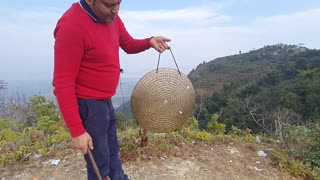 0:22
0:22
Singingbowl
2 years agoHimalayan gong
104 -
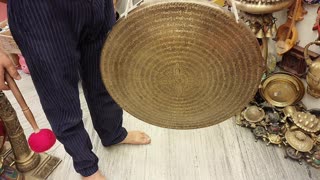 1:53
1:53
Singingbowl
7 months ago $0.02 earnedTibetan Gong
44 -
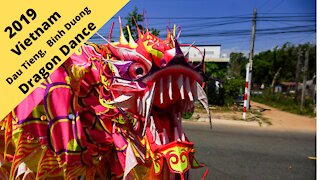 17:28
17:28
The Brown Family Workshop
3 years agoVietnam: Dau Tieng, Binh Duong Dragon Dance
50 -
 1:04
1:04
Singingbowl
1 year ago $0.01 earnedHimalayan gong
50 -
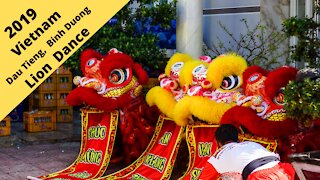 24:39
24:39
The Brown Family Workshop
3 years ago $0.01 earnedVietnam: Dau Tieng, Binh Duong Lion Dance
90 -
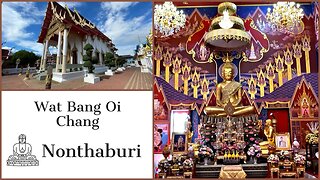 10:28
10:28
Endless Journey
8 months agoWat Bang Oi Chang - Built in 1761 - Nonthaburi Thailand 2023
35 -
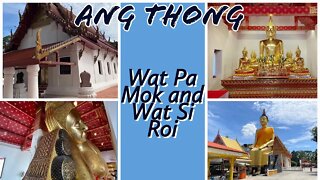 15:37
15:37
Endless Journey
1 year agoWat Si Roi and Wat Pa Mok - Thailand 2022 - Ang Thong District
33 -
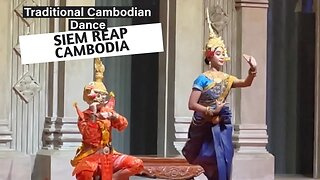 7:20
7:20
Endless Journey
1 year agoTraditional Dancing in Cambodia - Siem Reap 2023
3 -
 1:16
1:16
On the Beaten Path
10 months agoA must visit in Vietnam - the Áo Dài Museum!
1091 -
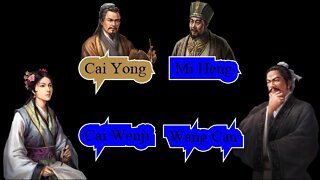 14:45
14:45
Three Kings
2 years agoWho are the Real Cai Yong, Cai Wenji, Wang Can and Mi Heng
60